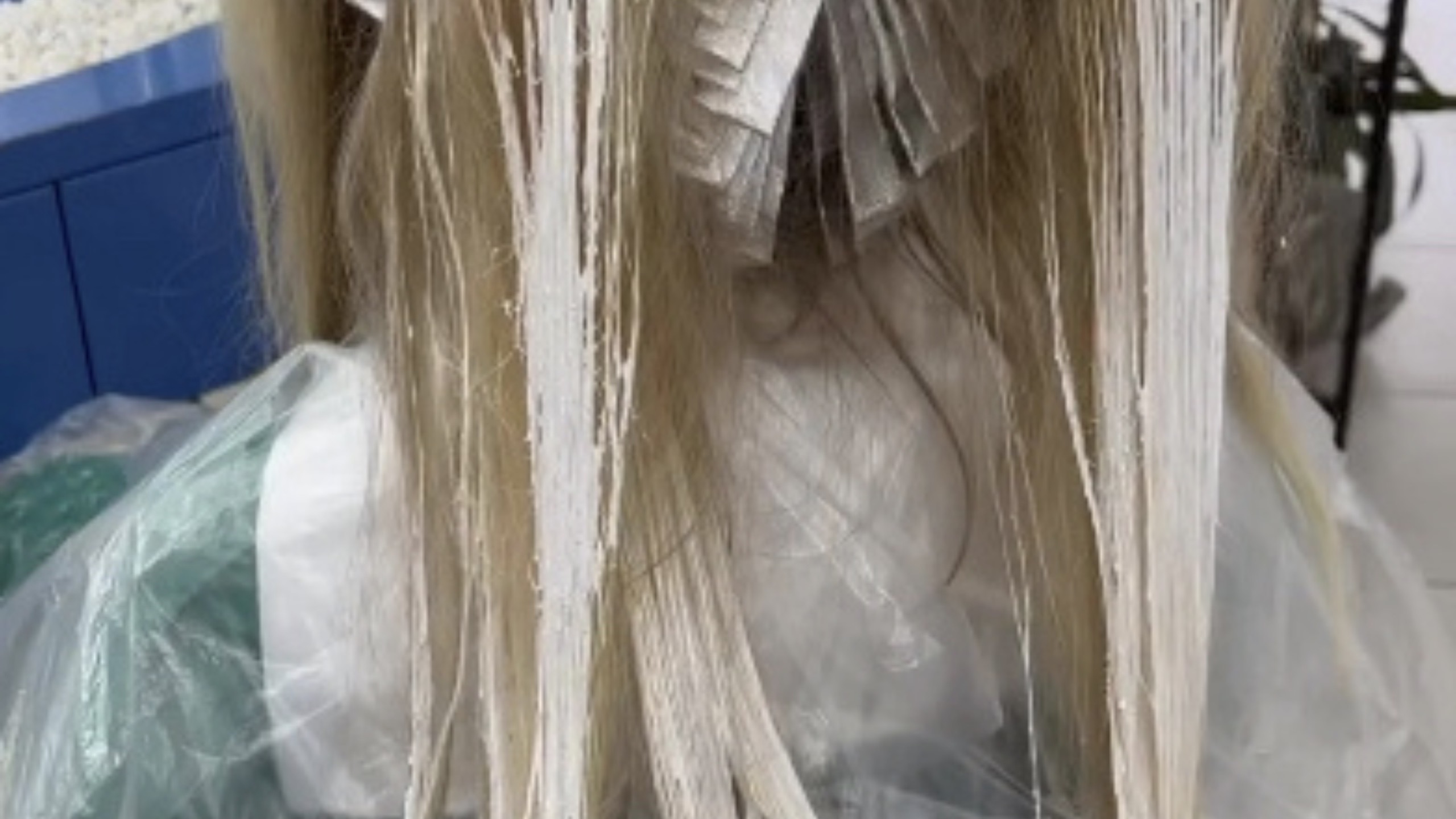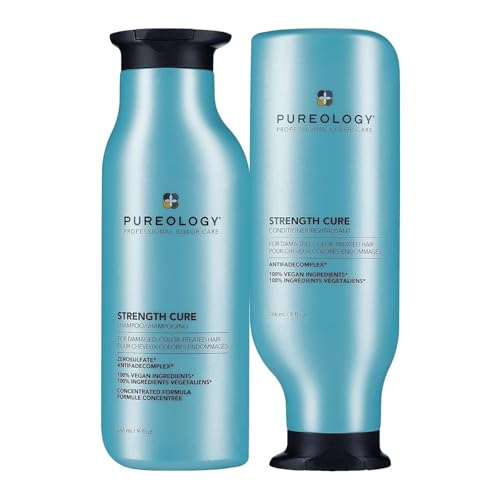Introduction: The importance of, depigmentation in processed hair.
Depigmentation is a key process when seeking to lighten color-treated or previously chemically treated hair. Without proper depigmentation, artificial pigments can interfere with bleaching, preventing the hair from achieving uniformly lighter shades.
When working with processed hair, the choice of products and techniques makes the difference between a professional result and damaged or stained hair. Here I will tell you how to achieve extreme blondes without compromising the health of the hair, based on my experience with bleached hair. low volumes y cosmetic bleaching powders.
What is depigmentation and why is it key in bleaching?
Depigmentation is the process of removing artificial pigments from the hair, whether from permanent or semi-permanent hair dyes. Unlike traditional bleaching, which works by removing natural pigments from the hair, depigmentation is specifically designed to remove previous coloring.
When performed correctly, depigmentation allows:
– To prepare the hair for a more uniform bleaching.
– Avoid unwanted tones such as oranges or greens.
– Reduce damage to hair before lightening to extreme blondes.
The key is to choose the right products and work with low volumes so as not to compromise the hair structure.
Low volume bleaching: The best option for treated hair
Specific care for PROCESSED HAIR
In my experience, working with low volumes is the best strategy to achieve controlled lightening without compromising the health of the hair. It is often believed that to achieve extreme blondes, it is necessary to use oxidizers of 40 volumesbut this can irreversibly damage the hair fiber.
The benefits of working with low volumes include:
– Greater control over rinsingavoiding overprocessing.
– Less damage to the hair cuticle and cortex.
– Better rinsing on processed hairIt allows to work by layers without burning the most fragile areas.
I have found that, when using cosmetic bleaching powders in conjunction with low volume oxidizers, gives much more uniform results and avoids staining.
Cosmetic bleaching powders: How to choose the best?
The bleaching powder you choose will make a difference in the final result. A good bleaching powder should be:
✅ Cosmetic and high qualityto protect the hair fiber.
✅ High lightening powerto achieve extreme blondes with less oxidant.
✅ With capillary protectionsuch as oils or Plex technology.
In my experience, cosmetic bleaching powders work best because they allow for a cleaner, more even lightening. cleaner and more uniformwithout forcing the hair or leaving it porous or brittle.
How to achieve extreme blondes without damaging hair
To achieve extreme blondes without damage, follow these steps:
1️⃣ Hair diagnosis: Evaluates the health of the hair before depigmenting or bleaching.
2️⃣ Pre-depigmentation: If the hair is colored, use a color remover before bleaching.
3️⃣ Bleaching with low volumes: Uses oxidizers of 10 or 20 volumes in controlled sessions.
4️⃣ Adequate exposure time: Do not leave the bleach on for more than 45 minutes at each session.
5️⃣ Protective treatments: Use additives such as Olaplex or similar to minimize damage.
6️⃣ Correct shading: After bleaching, neutralize unwanted tones with a good matting agent or toner.
This technique has allowed me to achieve super light blondes without damaging the hair.. The key is not to rush the process and to respect the exposure times.
Common bleaching mistakes and how to avoid them
❌ Using very high volumes thinking that it will lighten faster (it only burns the hair).
❌ Do not test for elasticity before bleaching.
❌ Applying bleach on badly damaged hair without a previous recovery plan.
❌ Do not use a good bleaching powderwhich can leave the hair with stains.
❌ Not shading correctlyresulting in orange or yellowish tones.
Avoiding these mistakes will allow the hair to reach the level 10 rinse without compromising its structure..
Professional tips to keep hair healthy after depigmentation
✔ Deep hydration with nourishing masks.
✔ Avoid heat tools the first few days after bleaching.
✔ Use sulfate-free products to maintain color and prevent drying.
✔ Apply hair oils such as argan or coconut to seal the cuticle.
✔ Reapply mattifiers every 2-3 weeks to maintain the cool blonde tone.
This care is key to keeping hair strong and shiny after extreme bleaching.
Conclusion: Keys to a successful and safe bleaching process
Achieve extreme blondes on processed hair without damage is entirely possible if you follow a careful technique and use quality products. In my experience, the best results are obtained when:
✅ We work with low volumes to protect the hair fiber.
✅ Cosmetic bleaching powders cosmetic bleaching powders are used that lighten without damaging.
✅ The process is respected and is not accelerated by aggressive oxidizers.
If you want to lighten your hair to high levels without risk, follow these tips and you will notice the difference. Bleaching doesn’t have to be aggressive if you do it right!
The real challenge begins after plating
Achieving the perfect platinum blonde is an art. But maintaining that cool, pearly, oxidation-free tone is where the hardest part begins. Many people think it’s mandatory to tone every 15 days, but in reality there are professional products that allow you to prolong the color for weeks without the need for constant toning.
In this professional guide you will find:
- Products I use in my Superblonding processes
- Weekly routine to avoid yellow and orange
- Natural tips and common mistakes to avoid
- Direct links to high quality products available on Amazon USA
- Exclusive resources such as our shading chart and step-by-step Superblonding technique
Common mistakes when bleaching hair at home
Why does blond hair oxidize after bleaching?
The problem is not the color, it’s the structure.
After bleaching, the hair fiber is left porous, dehydrated and without natural protection. This open structure absorbs oxygen from the air, metals from the water and chemicals from poorly chosen products.
Factors that dull platinum blondes
- Excessive use of shampoo with sulfates
- Sun exposure without UV filter
- Iron or hair dryer without heat protector
- Hard water with iron or chlorine
- Pigmentation by oils or industrial silicones
How to restore bleach damaged hair
Is it possible to keep the blonde without blonding?
Yes, and with real results.
The key is to prevent rather than correct. By using smart products and a consistent routine, you can extend the life of your platinum blonde without the need to apply color every week.
Top 5 products to maintain a platinum blonde hair color without using a mattifying agent
- Olaplex toning shampoo
Neutralizes yellow highlights from the first application. Use only twice a week.
VIEW PRODUCT - Moroccanoil Blonde Perfecting Purple Mask
Mask with violet pigment and argan oil. Ideal for sensitized hair.
VIEW PRODUCT - Redken One United – Leave-in conditioner : Multi-benefit hair treatment
Leave-in spray with cool pigment. Moisturizes, detangles and prolongs tone.
VIEW PRODUCT - Olaplex Nº 9 Thermal Protection Serum
Fixes the cuticle, protects from heat and pollution. Ideal for blow-drying or flat ironing.
VIEW PRODUCT - Pureology Strength Cure Blonde Shampoo
Sulfate-free cleansing, maintains ideal pH and prevents oxidation.
VIEW PRODUCT
Recommended weekly routine to maintain blond hair without coloring
| Day | Product | Action |
|---|---|---|
| Monday | Sulfate free shampoo + conditioner | Gentle cleaning |
| Wednesday | Fanola + Moroccanoil mask | Neutralization + hydration |
| Friday | Leave-in + thermal protector | Sealing + defense |
| Sunday | Oil mask + acid rinse | Deep recovery |
Natural products that you can include as a complement
- Apple cider vinegar rinse
Closes cuticle, balances pH and adds shine - Pure argan oil
Repairs, softens and prevents frizz without pigmenting - Chamomile tea with ice
Lightly clarifies, soothes the hair fiber and softens
Common mistakes that dull blonde hair
- Use shampoo with salt or sulfates every day.
- Applying shading agents without prior diagnosis
- Use oils with yellow or red pigment
- Sun exposure without UV protection
- Do not seal the cuticle after washing
Frequently Asked Questions
Can I use violet shampoo every day?
No. Maximum 2 times per week, otherwise the tone becomes saturated and the hair becomes dull.
What do I do if the blond turned orange?
Apply a blue or ash shade (such as 10.21 or 10.89), or try the technique with baking soda and volume 20.
How long does a well-groomed blond last without shading?
Between 4 and 6 weeks, if you keep a constant routine and use quality products.
important!!!
Maintaining the perfect blonde is not impossible. With the right products, a clear routine and avoiding common mistakes, you’ll keep a cool, luminous and even tone without having to shade every week.





